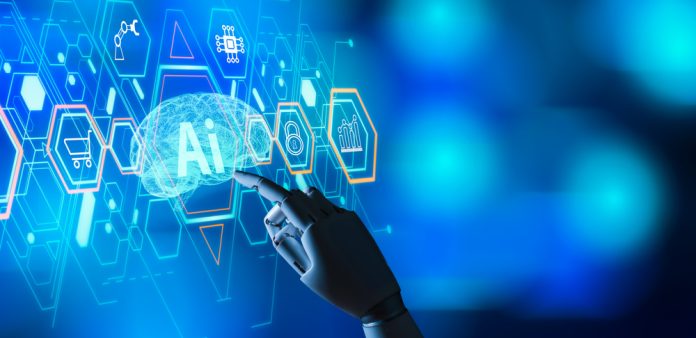
Artificial intelligence (AI) is disrupting the corporate world in profound ways, offering innovative solutions to traditional challenges and reshaping the future of learning and development. According to the Global Market Insight, AI in education market size reached $4 Billion 2022 and is projected to expand at a more than 10 percent compound annual growth rate (CAGR) from 2023 to 2032. The market size is predicted to reach $80 billion by 2032.
Many companies are looking for ways to incorporate AI in their learning and development (L&D) framework. AI literacy is still a concern. But we, as L&D professionals, are learning about AI and see it as a career goal. According to the 2024 LinkedIn Workplace Learning Report, 4 in 5 people want to learn more about how to use AI in the profession.
But what if AI could supercharge our current framework?
Based on my knowledge and experience in instructional design and AI, I have come across some innovative strategies, highlighting the components of the L&D framework to demonstrate impact at the organizational level.
Alignment with Business Objectives
When considering business strategies and achieving alignment, it’s essential for Learning and Development professionals to develop learning plans that align with the company’s business objectives and the skills of its employees. L&D aims to foster professional growth and cultivate essential capabilities.
AI enables L&D professionals to align training initiatives with organizational objectives more effectively by providing actionable insights and recommendations based on data-driven analysis, thereby directly supporting the business strategy. For instance, platforms such as Mindtickle, a sales enablement tool, assist employees in refining their sales pitches by analyzing keywords, speech pace, and filter words to enhance personalization, directly impacting business alignment.
Assisting with sales pitches directly enhances the performance of sales teams, resulting in increased sales.
Target Audience
By leveraging AI-powered recommendation engines, L&D professionals can analyze learner data to suggest training materials and courses that are most relevant to each learner’s past behavior and performance. This personalized approach leads to increased learner engagement and retention rates.
For instance, Khan Academy recently introduced Khanmingo, an AI-powered chatbot designed to offer personalized, one-on-one tutoring to learners. This innovative tool demonstrates how AI can provide tailored support and guidance to learners, ultimately enhancing their learning outcomes.
Effective Content
Content creation by AI empowers L&D professionals to develop and deliver highly impactful learning materials, thereby enhancing the overall learning experience for employees. For instance, content generators powered by AI such as ChatGPT, Gemini, and CoPilot analyze vast amounts of data to create personalized learning modules and interactive simulations tailored to individual learning preferences and needs. These personalized materials not only increase learner engagement but also improve retention and application of knowledge.
Additionally, tools such as 7Taps streamline the deployment of employee training through microlearning, allowing L&D professionals to deliver targeted learning content in minutes. By leveraging content creation tools driven by AI, L&D teams can efficiently meet the diverse learning needs of employees while maximizing the effectiveness of training initiatives.
Delivery and Implementation
AI plays a pivotal role in enhancing the delivery and implementation of training initiatives by providing innovative solutions for content delivery, assessment, feedback, and interactive learning experiences. For instance, platforms such as Degreed utilize AI algorithms to personalize learning pathways for each learner, recommending relevant content based on their preferences, skills, and career goals. These platforms also offer features such as real-time performance tracking, personalized feedback, and adaptive learning paths, ensuring that learners receive a tailored and engaging learning experience.
Measurement and Evaluation
Standard key performance indicators (KPIs) such as employee performance improvement, skill gap reduction, and employee engagement are commonly used to measure the effectiveness of training programs. These metrics provide valuable insights into the impact of training on individual and organizational performance.
With the integration of AI, new KPIs can be introduced to further enhance the measurement of training success. For example, predictive learning analytics can forecast future learning needs and trends, while emotion analysis and voice and tone analysis can assess learners’ emotional engagement and communication effectiveness. These new KPIs offer deeper insights into the effectiveness of training initiatives and help organizations optimize their learning strategies for greater impact.
Additionally, AI-powered analytics platforms such as Fireflies and Domo play a crucial role in facilitating the measurement of these new KPIs. By analyzing recordings of meetings and Webinars, these platforms generate reports with insights and sentiment analysis, providing valuable feedback on the effectiveness of training initiatives and informing future learning strategies.
Continuous Improvement
We never stop learning! AI enables data-driven insights, personalized learning, and adaptive content delivery to enhance continuous learner improvement, ensuring that training remains relevant and efficient. For example, AI analyzes learner data to provide personalized recommendations and adapts content delivery based on individual learning preferences. Platforms such as Beeshake foster a collaborative environment for continuous improvement, encouraging learners to share knowledge and insights to enhance their skills further.
In conclusion, the integration of AI into learning and development represents a pivotal shift in how we approach training and skill development. As we navigate this transformative landscape, it’s clear that AI offers unprecedented opportunities to enhance learning outcomes, align training initiatives with organizational objectives, and foster a culture of continuous improvement. By leveraging AI-driven insights, personalized learning experiences, and innovative tools, we can empower learners to thrive in a rapidly changing world. Let us embrace the potential of AI to revolutionize learning and development, driving organizational success and unlocking new levels of potential for all learners.

